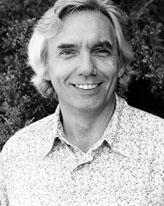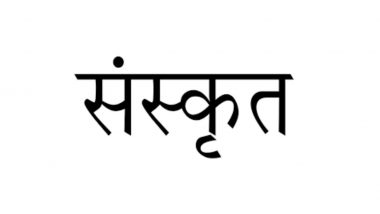Samsâra Means Running Around in Circles
by Georg Feuerstein

27 May 1947 – 25 August 2012

The Indic sages coined an excellent term for the kind of situation that we find ourselves in so long as we are not enlightened, or liberated. They speak of samsâra, which literally means “confluence”—the flowing together of the conditions that shape our finite lives. Another, more descriptive translation of this term is “running around in circles.” For this is exactly what is occurring at the level of conditional existence, which is our locus. Countless beings endlessly repeat themselves; that is, they duplicate their karmic patterning over and over again.
Samsâra, then, is habit. It is the sum total of the habits of all beings and things. Even a piece of rock can be said to be subject to a habit pattern. Unlike the behavior of a human being, which can be varied and occasionally even surprising, a rock’s behavior is largely static and totally predictable. It is behavior nonetheless, unless we insist on restricting the use of this term only to animate or sentient beings.
While we expect the behavior of an inanimate thing like a rock to be completely predictable, we consider stasis—or rigidity—among our fellow humans as neurotic and undesirable. Yet rigidity is a matter of degree, and we can witness a wide range of responsiveness in members of the human species. Some individuals are more rigid and predictable than others. Some behave like clockwork, others are out of control. But even those who are out of control or “crazy,” are in many ways still quite predictable, because their behavior too is merely karmic self-replication. And this is the crux of the matter: All of us are prone to repeat ourselves endlessly. There is a marked lethargy in the human psyche, and resistance to change is deep seated in us. We all seem to fear change, and with some people this fear is so overwhelming that it paralyzes them. Others conceal their fear by behaving “as if” they were free of it; they challenge themselves, even at the risk of their own life. Yet, they may be daredevils only in certain areas, while in others they are dominated by the kind of arrested development that springs from fear. For instance, a person can be utterly heroic and self-transcending while scaling the most treacherous mountain on earth, but down below in the valley, their fear-bound conservatism is locking them into self-defeating karmic patterns of emotional dependence, sexual obsession, moral rigidity, or neurotic avoidance of anything that challenges their subjective picture of the world. At the peak, way above the timber line, they sense a freedom that escapes them in the valley. But that freedom can only be illusory so long as the mental habit patterns impelling the mountaineer to seek the adventure of the climb are still intact. True freedom dawns when the karmic tendencies that create the ego-personality in the first place are transcended.
Thus spiritual self-transcendence is true heroism. It alone ends the self-repeating loop that the Indic sages call samsâra. The freedom that the liberated being realizes is the unmappable landscape of the Spirit (âtman, purusha) itself. That freedom is nirvâna—the wind-still condition, the state of perfect tranquility that no conditional event of samsâra can undermine. Hence the liberated being who is still immersed in the finite realm of existence is not intimidated by samsâra. There is no fear of change. Nor is there any fear of death, which, from the ordinary human perspective, represents the ultimate transition. For the liberated being, samsâra is a complete non-event. In fact, the liberated awareness does not even operate with the kind of dualism implicit in the conceptual distinction between nirvâna and samsâra. On the contrary, as the Mahâyâna Buddhist master Nâgârjuna pointed out so vigorously, nirvâna is samsâra and samsâra is nirvâna.
This grand spiritual realization entails the recognition that even while we are afraid of change and death and are troubled by the vicissitudes of samsâra, we are immersed in the freedom of the Spirit. For the Spirit, which is devoid of any trace of suffering, is our inalienable nature. We are simply ignorant of this deep truth and consequently deem ourselves to be finite beings who are destined to suffer and die. In other words, it is our ignorance avidyâ) of our true nature that is responsible for our misidentification with a particular body-mind. In actuality, according to Yoga, our true identity is the Spirit, which is the same superconscious reality in every being and thing.
As soon as we take our first breath in a human body, this illusion is created and becomes more overpowering as the brain/mind is educated to function ever more in human ways. In the end, we might even come to the conclusion that there is no reality beyond the body-mind, and that consciousness is a function of the brain. The testimony of all great spiritual masters, however, is otherwise: What we conventionally call consciousness (citta) is merely the borrowed light of a sublime radiance that exceeds the physical and mental levels of existence. It is indeed largely dependent on brain functions, which, in turn, are dependent on the body’s biochemistry. But awareness—or superconsciousness (cit)—requires for its existence no neurons, chemicals, or atomic and subatomic particles. It is, in fact, that in which all matter and thought arises and vanishes in every moment.
That verity is glimpsed in higher states of ecstasy (samâdhi) and fully realized upon enlightenment (bodhi), which is a permanent identity shift: Instead of experiencing ourselves as a specific individuated being, we realize our true nature as the superconscious substratum of all individuated beings and their perceived environments.
Upon enlightenment, we cease to run around in circles. On the contrary, we stand at the still point, the axle hole (kha) of the great samsaric wheel, which continues to whirl round and round at dizzying speed for all those who are as yet unenlightened. Our own bodies, which are crystallized karmic residue, continue to live out their destiny (which is inevitable death), but “we”—as Spirit—are completely unaffected by the bodily processes and experiences.
According to some schools of Yoga, the enlightened being’s superconscious radiance gradually transforms and transubstantiates the physical body itself and creates a “body of light” or superconductive body (ativâhika-deha). This nonphysical vehicle defies the laws of Nature and is endowed with all kinds of extraordinary capacities. It is really an extension of the enlightened being’s unfettered mind, which has pierced the veil of illusion (mâyâ) and is perfectly attuned to the ultimate Reality. This superconductive body allows the liberated one to remain in the conditional realms and serve the awakening of others, without becoming subject to decay and death, which is the inexorable fate of ordinary bodies.